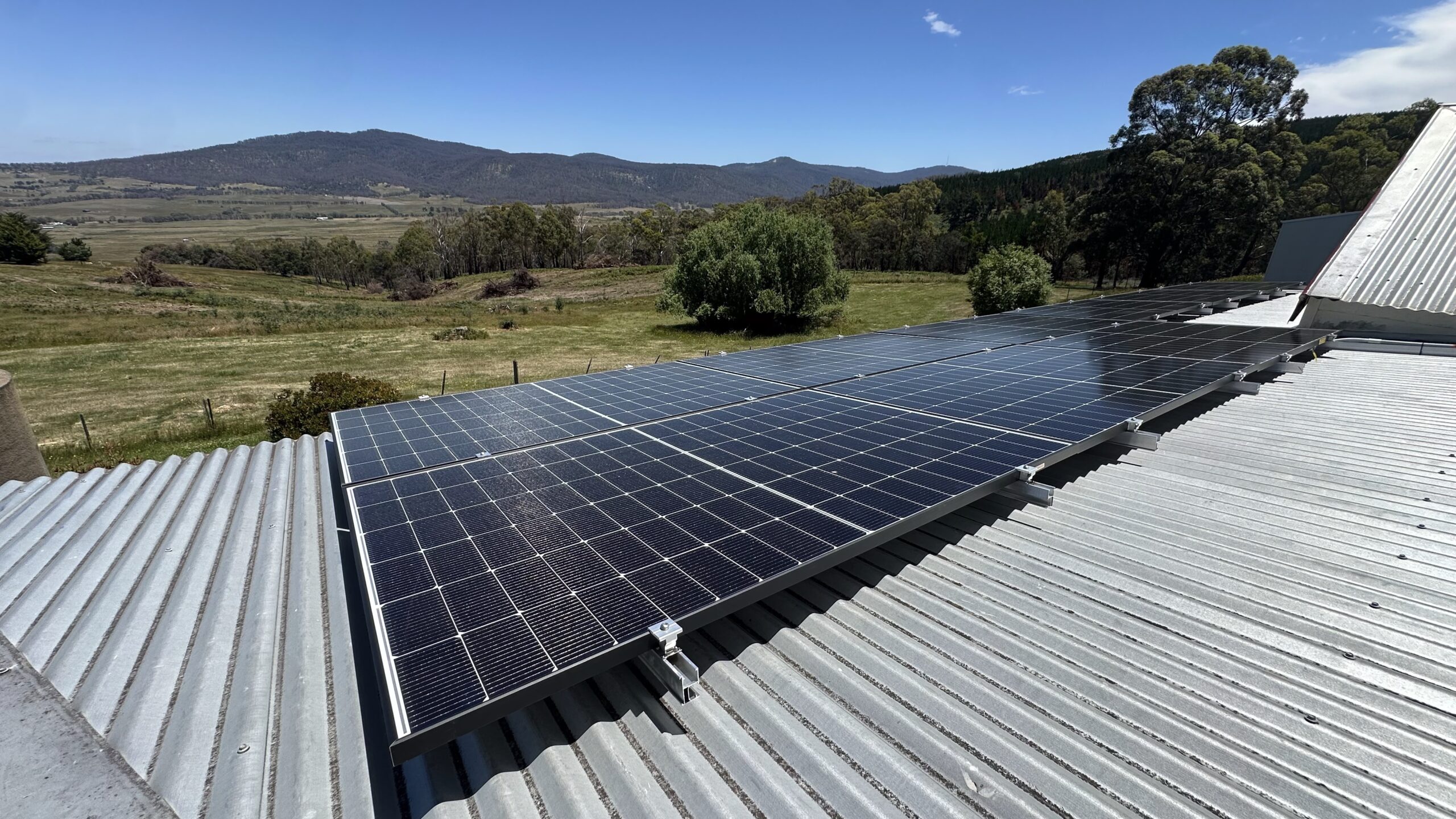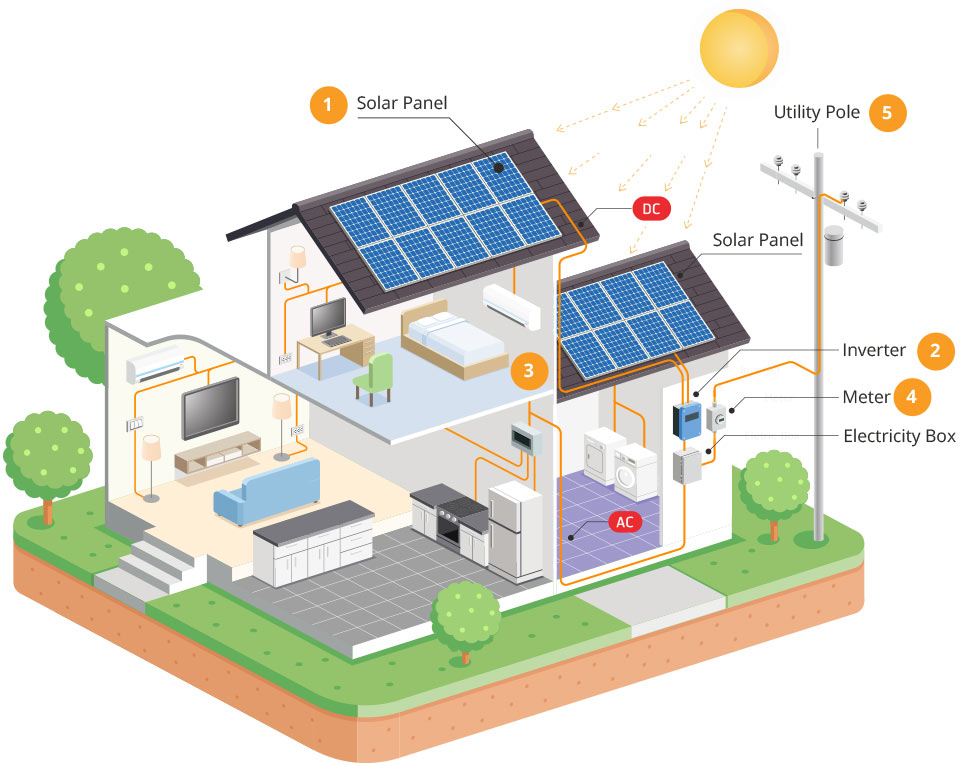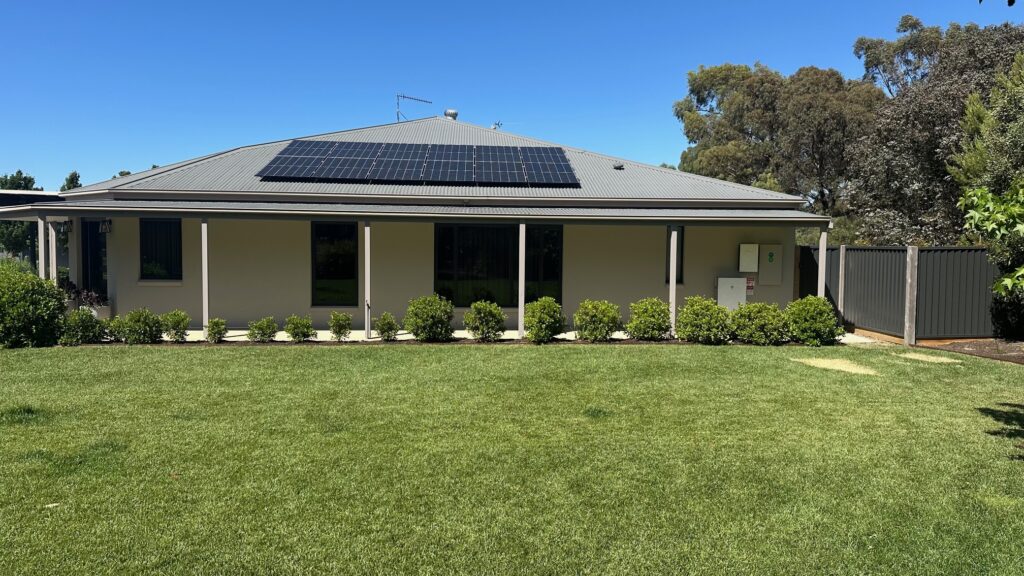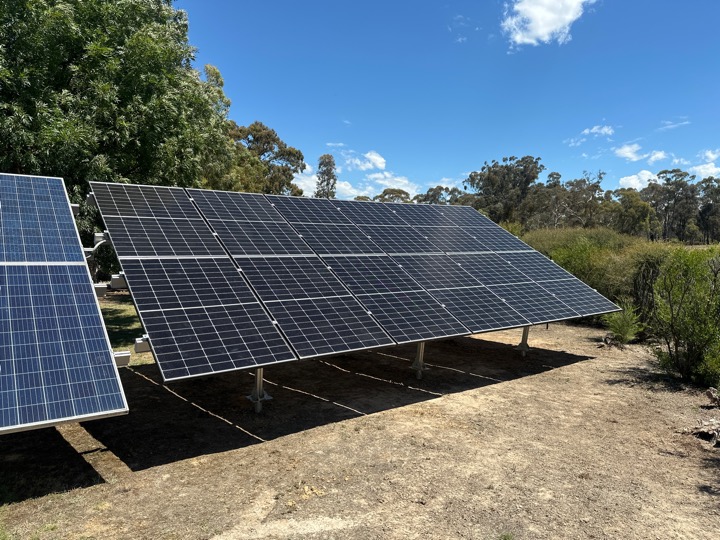
Solar Power
Understanding Solar Power with Ballarat Solar Panels
Australia is a global leader in rooftop solar installations, with millions of households harnessing the power of our sunny climate to generate their own electricity. However, deciding to install a rooftop solar system is a significant choice for any home. That’s why it’s crucial to do thorough research and understand the installation process before committing. This guide is here to provide you with all the essential information to make an informed decision about purchasing a rooftop solar system.
How solar works
When the sun is shining, solar panels convert sunlight into DC (direct current) electricity. This electricity is then transformed into AC (alternating current) power by the solar inverter, making it usable for your home. Your household appliances (such as your fridge, dishwasher, pool pump, etc.) run on this solar-generated power, reducing the need to draw electricity from the grid.

- Solar Panels
Solar panels, also known as solar modules, convert sunlight into electrical energy. They consist of photovoltaic cells that capture sunlight and generate an electrical current.
The efficiency of the panels determines how much energy they can produce, and the number and size of panels required depend on your home’s energy needs. - Inverter
Solar inverters convert the direct current (DC) energy generated by the solar panels into alternating current (AC) energy, which powers household appliances.
They play a crucial role in the system’s performance and come in various types, such as string, micro, and hybrid inverters. A Ballarat Solar Panels installer can guide you in selecting the right inverter based on your energy requirements and budget. - Meter
Grid connection requires an electricity meter capable of recording bi-directional electricity flow to track both the energy sent to and drawn from the grid. Most households in Victoria already have Smart Meters that can do this. However, if you’re one of the few households without a Smart Meter, you will need to upgrade to one.
The most common form of solar is grid-connected
Solar systems perform best when placed in an optimal location, ideally facing north, though this isn’t strictly necessary, and when they receive sufficient sunlight without being blocked by shade from trees, power lines, or nearby structures. Depending on the amount of sunlight available, a grid-connected solar system will work in one of the following ways:
During daylight hours, the solar system generates more energy than the household consumes:
In this case, household appliances are powered by the solar system, and any surplus energy is sent back (exported) into the electricity grid. If you’re exporting excess energy, your energy retailer may compensate you through a feed-in tariff (see 60c Tarrif for more information).
During daylight hours, the solar system generates less energy than the household consumes:
Here, the solar system will provide power for household appliances, but any additional energy needed will be drawn from the grid. The system tracks solar generation, consumption, and export through a smart meter, which provides data for electricity billing.
Other Types Of Solar Systems
Grid-Connect with Battery Back-Up (Hybrid Systems)
As solar customers in many states now receive lower payments for electricity sold back to the grid, battery back-up systems offer a practical solution. These systems store excess electricity generated during the day, allowing you to use it to power your home at night. Additionally, they can provide power during outages, ensuring your household remains powered even when the grid is down
Stand-Alone Solar Systems (Off-Grid)
Stand-alone solar systems are not connected to the electricity grid and are usually installed in remote locations with limited grid access or areas with low electricity demand. Unlike grid-connected systems, stand-alone systems require batteries or backup generation to provide power at night. Often, these systems also include a diesel or petrol generator to supplement the energy supply when needed.

Understanding you energy consumption
To determine if investing in solar is the right choice for you, it’s essential to understand your energy usage. Your electricity retailer can provide you with this information. Knowing how much solar power you can use throughout the day will help you choose the right-sized system and ensure you get the best return on your investment.
Your electricity retailer should provide your average daily usage in kilowatt hours (kWh) on your electricity bill. Having this information and your bill on hand when you first contact a solar retailer will help you collaborate to design a system that maximizes the benefits of your new rooftop solar setup. Keep in mind that your electricity usage can vary between seasons, so it’s a good idea to review bills from different times of the year for comparison.
The greatest benefit of solar comes from “self-consumption”—using the power your solar system generates instead of drawing from the grid. If you or your family aren’t home during the day, you can still make the most of your system by adjusting how you consume energy or running appliances during peak daylight hours.

Understanding your roof
Despite what some advertisements may suggest, there is no “one-size-fits-all” solution for solar, and the cheapest system is often not the best choice. Every home is unique, and your needs can vary greatly based on your specific circumstances. Factors such as the orientation (angle to north) of your roof, the pitch (slope or angle), available space, shading, and even the type of roof (tile, tin, concrete, etc.) all influence how effectively you can benefit from solar, or whether it’s even a feasible option for you.
For example, if the roof space available on your property only accommodates a small system, this could limit your solar generation capacity. In such cases, you may rely more on consuming the electricity you produce rather than exporting it to the grid. It’s a good idea to speak with your Ballarat Solar Panels about designing a system that maximizes your self-consumption potential.
Solar Power Ballarat
With the cost of purchasing electricity from the grid at an all time high solar power proves to be by far the cheapest form of energy for your home.
With years of experience and Clean Energy Council (CEC) accreditation, choose Ballarat Solar Panels as your local electrician to help you out with your solar needs.
Types of solar systems we supply

Learn more about the type of Solar Power you are interested in by clicking the button below
